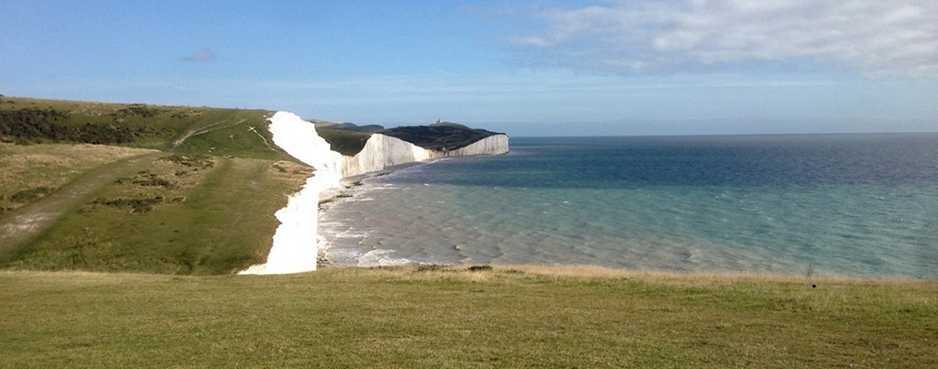South Downs
South Downs Way with Beachy Head and Seven Sisters - By Lou Stone
Sussex is my adopted home, I was drawn here over 20 years ago by the friendliness of the locals, benign climate, and glorious combination of downland and seascape.
The South Downs National Park is Britain’s newest park, created in 2011. It’s dominated by a mixture of rolling chalk downland and the woods and heaths of the Sussex Weald, rich with rare habitats.
My favourite walk to lead, because it’s one of my favourite walks of all time, is along the Sussex Heritage Coast, one of the longest stretches of undeveloped coast in the south. On the 10-mile version of the walk, we follow the South Downs Way, taking in both Beachy Head and the Seven Sisters Cliffs in all their dramatic glory. I never tire of this area, because the huge vista of sky and sea is constantly changing, so no two days are the same.
We start at Beachy Head where the chalk cliffs reach 162m at their highest point. It’s true that this area has a rather sadder reputation, but it’s also steeped in fascinating history and legend. Have you heard for instance of the Battle of Beachy Head in the C17, which saw the English Channel fall temporarily into the hands of the French?
This is a linear walk, and the start and finish are both accessible by different bus networks, and both have paying car parks. Beachy Head also has a Visitor Centre to soak up some local knowledge before you set off. It’s possible to start from Eastbourne town where the South Downs Way officially starts (or finishes depending on which direction you walk it), but the rude ascent doesn’t ease you in gently! It’s also possible to finish at the pub in Exceat Bridge to catch the bus back.
The sight of the many hills unfolding to the limit of vision can appear daunting, but as all the hikers who have joined me on this walk will testify the hills do just roll under your feet as the morning goes by.
The chalk cliffs are geologically fairly new, created 120 million years ago when SE England was covered by a tropical ocean by the calcareous bodies of microorganisms falling to the ocean floor. Curiously, there are two lighthouses, one on the clifftops, and one at sea level. The clifftop lighthouse, Belle Tout, is older, built in 1831, in fact one of the first lighthouses in the country. However it quickly became apparent that it was useless as soon as the sea mists rolled in and obscured the light, so Beachy Head Lighthouse was built on the beach in 1902, and is still in use today, whilst Belle Tout has been a series of residences ever since. In the 1990s the foundations of Belle Tout were endangered by coastal erosion, so the lighthouse was moved back 17m from the cliff edge in an incredible feat of engineering, using hydraulic jacks to raise and push the building along steel-topped concrete beams lubricated with grease, left in place for when the procedure inevitably needs repeating.
After pausing at the tiny hamlet of Birling Gap, we count off the eight hills of the Seven Sisters! Another consequence of coastal erosion! The cliffs retreat by an astonishing 50cm a year. Being allowed to erode naturally means these cliffs are pure white, unlike Dover which requires sea defences, so in fact many of the movies depicting the White Cliffs of Dover were actually filmed at the Seven Sisters.
For the rest of the day we follow the undeveloped Cuckmere River from its haven, rich in birdlife. It’s known for its classic textbook meanders, which look stunning from on high, though this is all changing as the Environment Agency has stopped shoring up the haven with pebbles, and the area is reverting back to its former salt-marsh habitat. Contrasting with the calm beauty of this place is its ribald history; invaded and settled by the Anglo-Saxons in the 5th Century, who gave the county of Sussex its name, and also the main thoroughfare for smugglers for some 300 years.
We enjoy a riverside pub lunch, before continuing to follow the river and the South Downs Way further inland, through ancient Saxon villages and woodland to finish at the picture postcard Alfriston Village with time to explore: do you want to see the first ever property acquired by the National Trust, risk a haunting in one of several 16th Century pubs linked to the smuggling trade, or take traditional cream tea in one of 4 teahouses?

.jpg)
.jpg)
.jpg)